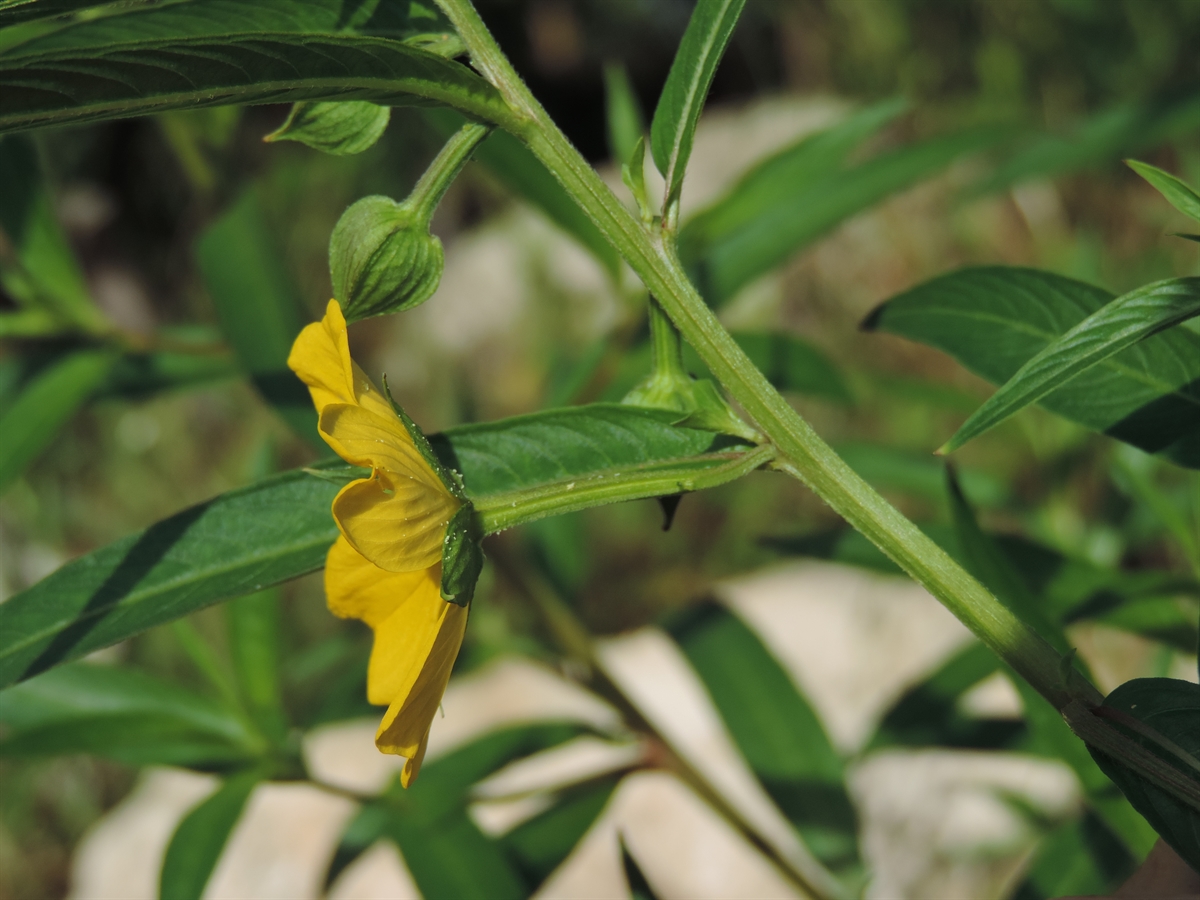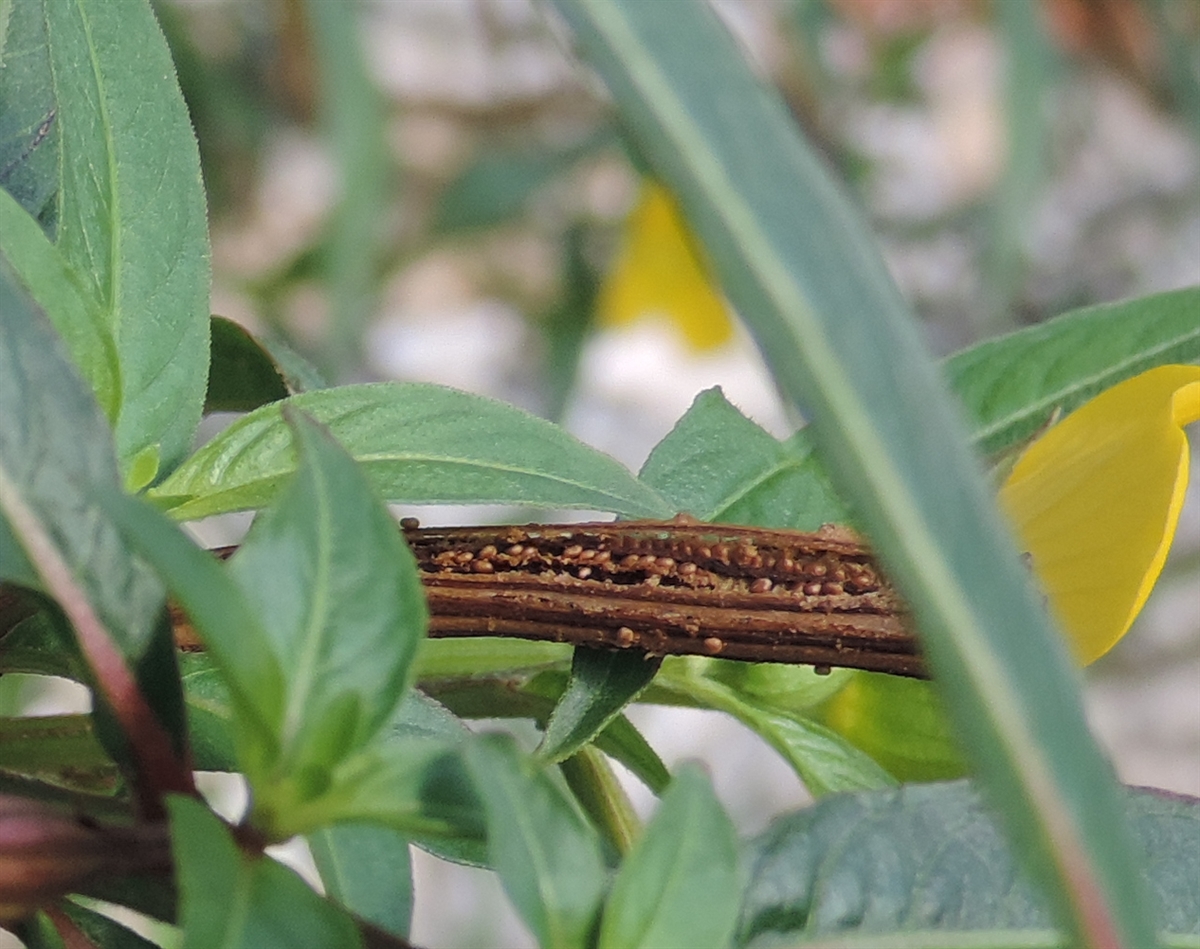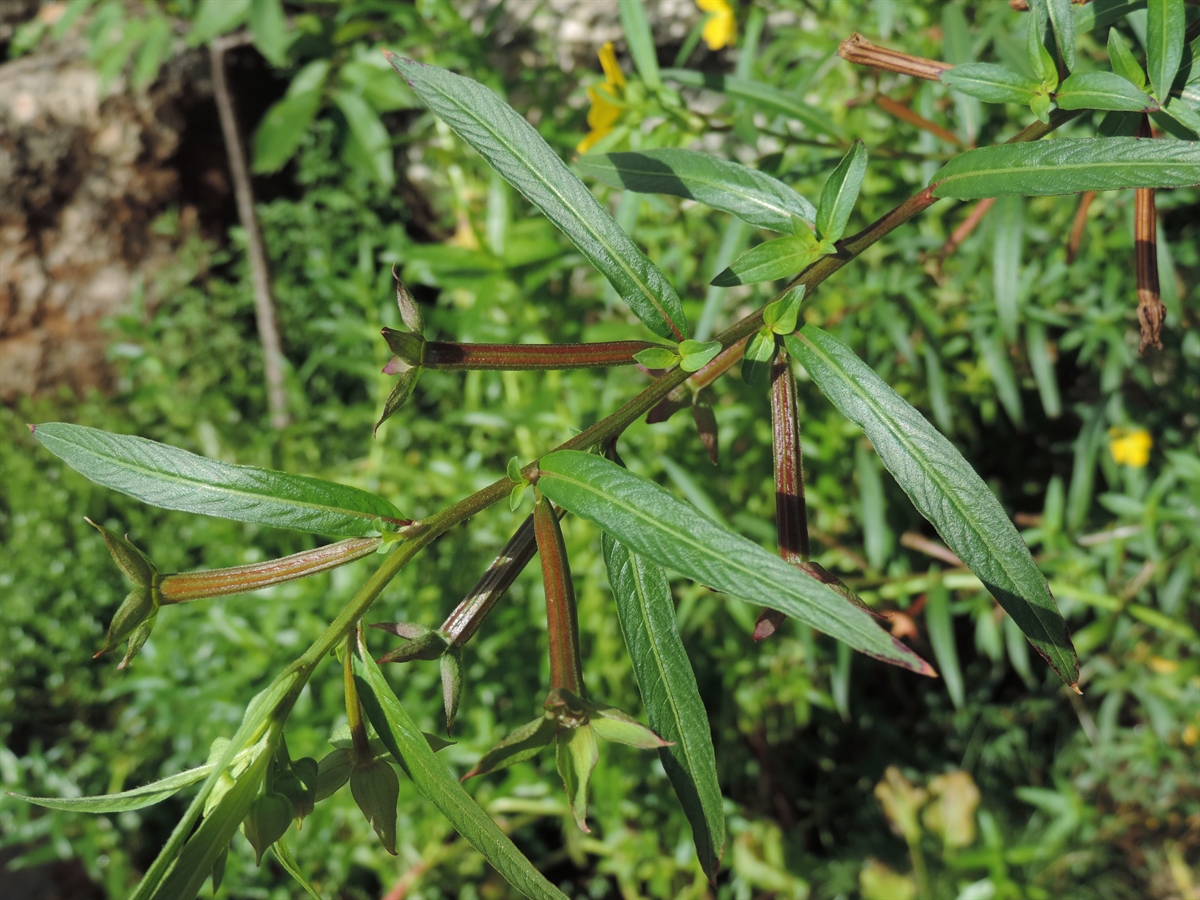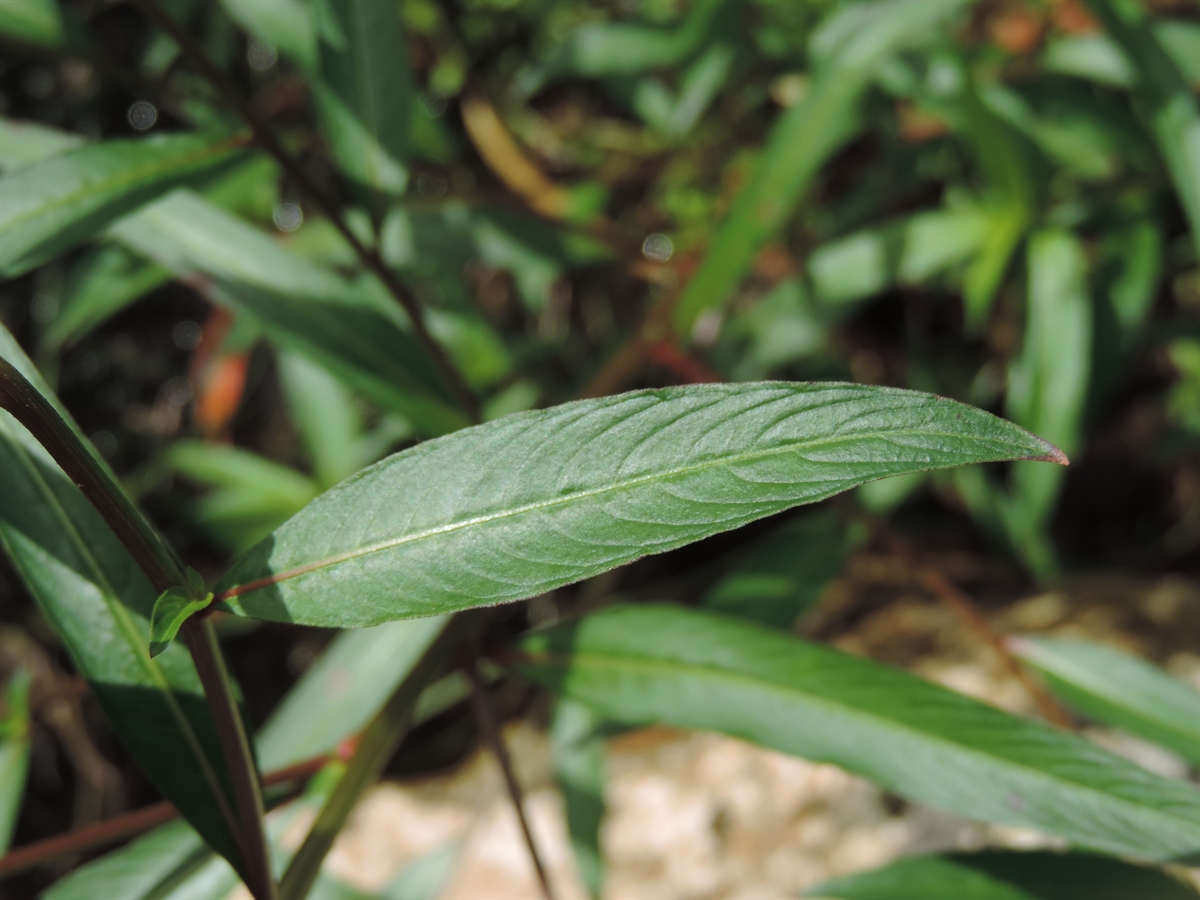Habit: Ludwigia erecta grows as a mostly glabrous annual herb up to 1 m in height. The stems are squarish, sometimes tinged with red at the angles. The leaves are arranged alternately, up to 12 cm in length and 2 cm wide, ovate to lanceolate, an entire margin and an acute/acuminate leaf apex.
The complete, perfect, actinomorphic flowers are arranged solitary in leaf axils and subtended by 2 bracts. The calyx has 4 green, unfused sepals. The corolla has 4 unfused, yellow petals. There are 8 stamens. The ovary is inferior with 1 locules and numerous ovules. The fruit is a square capsule.
Habitat: Ludwigia erecta grows in and around Ephemeral and Permanent Fresh Water Wetlands.
Distribution: Ludwigia erecta occurs in the northern island groupings in the Lucayan Archipelago, Caribbean, Mexico, Central and South America, and the southern United States. It is now invasive throughout Africa.
Medicinal/Cultural/Economic usage: Ludwigia erecta is not known to be used medicinally in the Lucayan Archipelago.
The leaves are edible.





